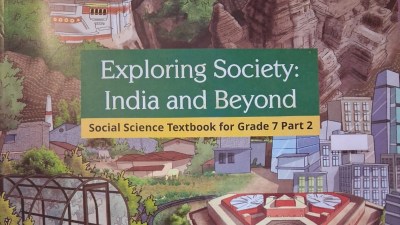📣 For more lifestyle news, click here to join our WhatsApp Channel and also follow us on Instagram
Find out what ‘O’ in ‘o’clock’ stands for
Has anything changed with the advent of digital clocks and modern technology?
 The need for clarity diminished with time, and the abbreviation ‘o’clock’ emerged as a standard way to indicate the time of day. (Source: Freepik)
The need for clarity diminished with time, and the abbreviation ‘o’clock’ emerged as a standard way to indicate the time of day. (Source: Freepik)Have you ever wondered what the “O” in “o’clock” stands for when you check the time? This seemingly small and ordinary letter has been a part of our daily language for centuries, yet many people may not know its origins or true meaning.
Mehul Bhagwani, watch enthusiast and digital growth marketer, tells indianexpress.com, “The term ‘o’clock’ comes from the phrase ‘of the clock,’ which simply referred to the time shown on a clock. Back in the 14th century, as clocks became more common, people used ‘of the clock’ to differentiate clock time from other methods like sundials. For example, they’d say ‘three of the clock’ to mean 3:00 PM. Over time, this got shortened to ‘three o’clock,’ with the ‘of the’ part contracting to just ‘o’.”
How did the expression ‘of the clock’ evolve into the shortened form ‘o’clock,’ and when did this change occur?
“The shift from ‘of the clock’ to ‘o’clock’ happened gradually, with the shortened form becoming popular by the 16th century. The apostrophe in ‘o’clock’ shows that part of the phrase was left out. This change reflected how people were starting to speak more casually, and eventually, the longer version faded out, leaving just the shorter, more convenient ‘o’clock,’” according to Bhagwani.
Originally, the phrase ‘of the clock’ was used in medieval English to differentiate time told by a clock from time told by other means, such as sundials or astronomical observations. During the 15th and 16th centuries, mechanical clocks became more common in public spaces, like town squares and churches, and gradually influenced how people referred to the time. The need for clarity diminished, and the abbreviation ‘o’clock’ emerged as a standard way to indicate the time of day.
 With digital clocks and modern technology, we still use “o’clock,” (Source: Freepik)
With digital clocks and modern technology, we still use “o’clock,” (Source: Freepik)
Why was it necessary to distinguish time as ‘of the clock’ in earlier centuries, and what were the alternative methods of timekeeping used at that time?
In earlier centuries, Bhagwani informs, clocks were a new invention, and there were several other ways to tell time, like using sundials, hourglasses, or water clocks. “So, ‘of the clock’ was used to make it clear that the time being referred to came from a mechanical clock. This distinction was important as society began to standardise how time was measured and referenced.”
How has our understanding and usage of the term ‘o’clock’ changed with the advent of digital clocks and modern technology?
Bhagwani mentions, “With digital clocks and modern technology, we still use ‘o’clock,’ but it’s become a bit less formal. People often drop it in casual speech, saying just ‘it’s three’ instead of ‘it’s three o’clock.’ Even so, o’clock has stuck around as a familiar and standard way to express time, showing how some traditions carry on, even as technology and language evolve.”
The term ‘o’clock’ remains prevalent, particularly in situations where clarity or emphasis is needed, such as in public announcements, educational settings, and formal writing. Despite the rise of digital technology that often displays time in a 24-hour format (e.g., 15:00), ‘o’clock’ continues to be used in everyday language and popular culture, reflecting the influence of traditional expressions on modern communication.
📣 For more lifestyle news, click here to join our WhatsApp Channel and also follow us on Instagram
- 01
- 02
- 03
- 04
- 05



























